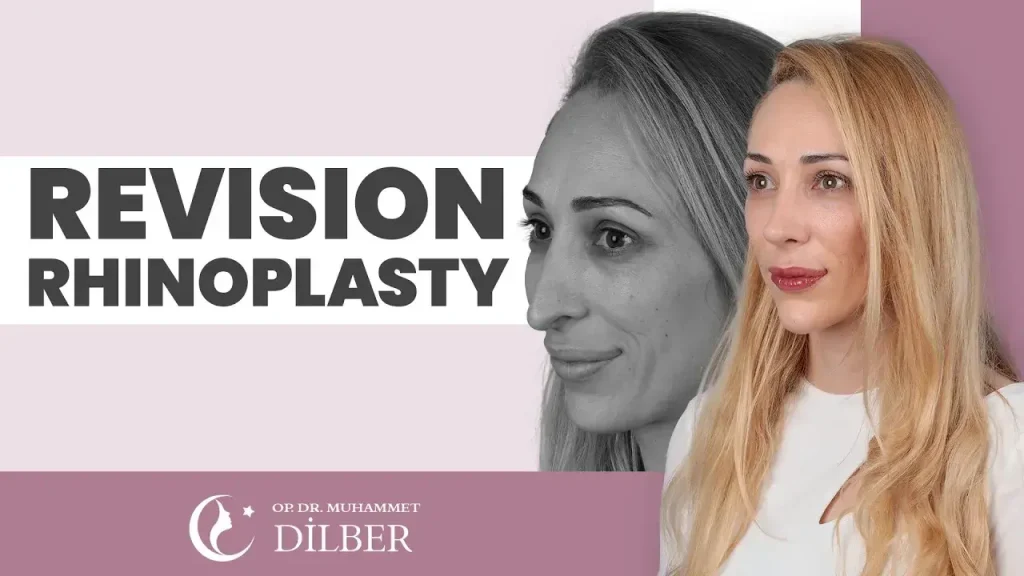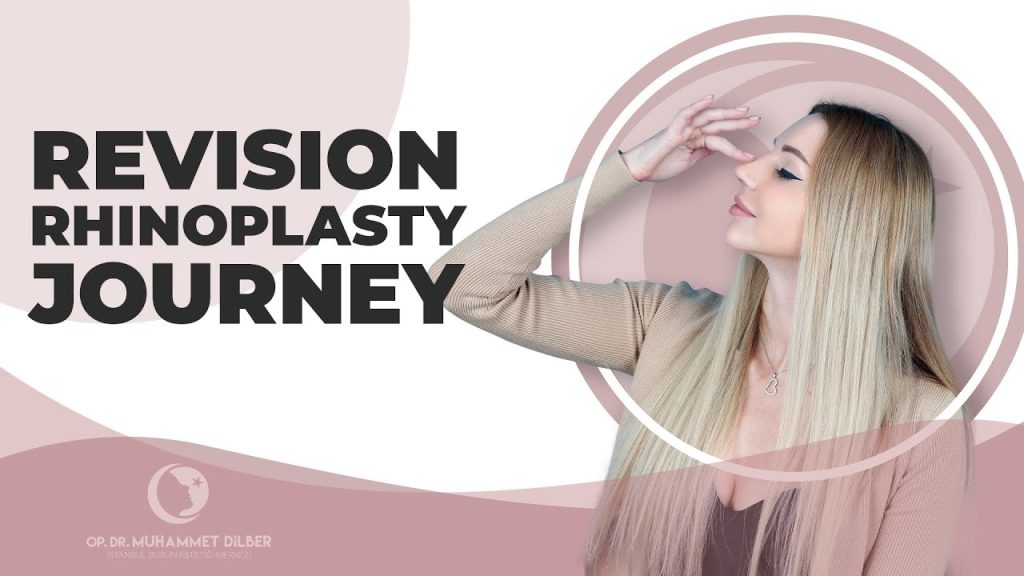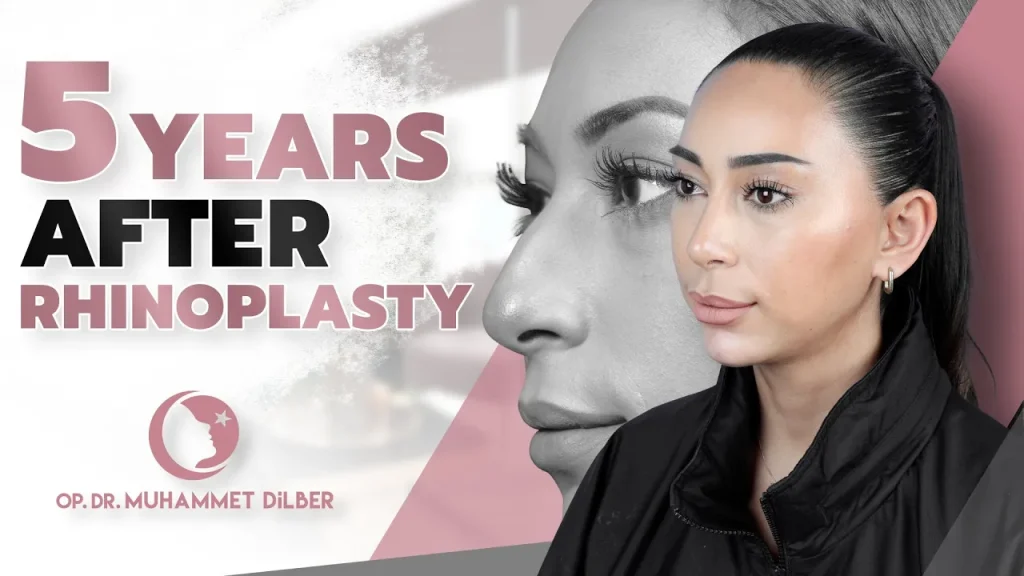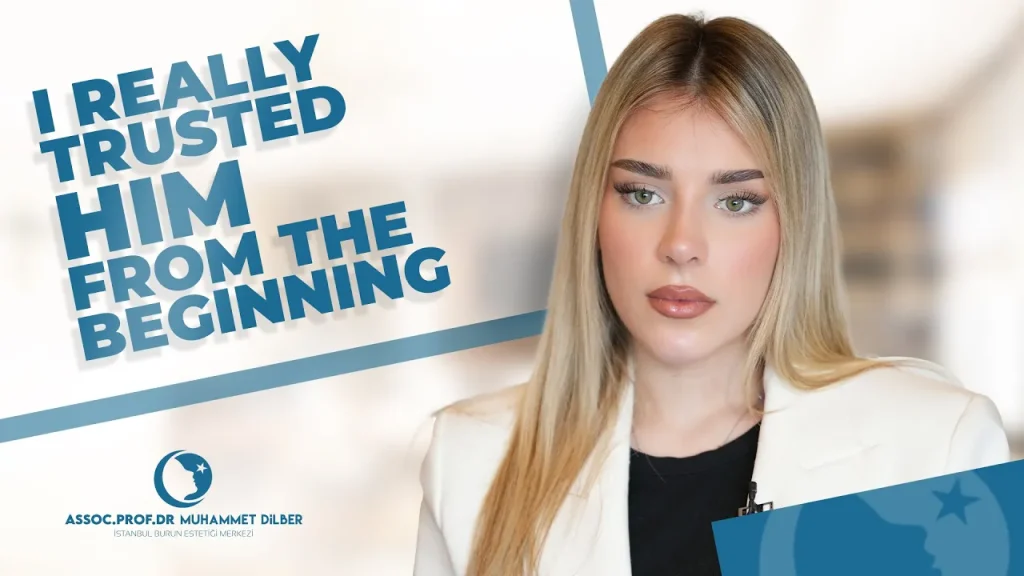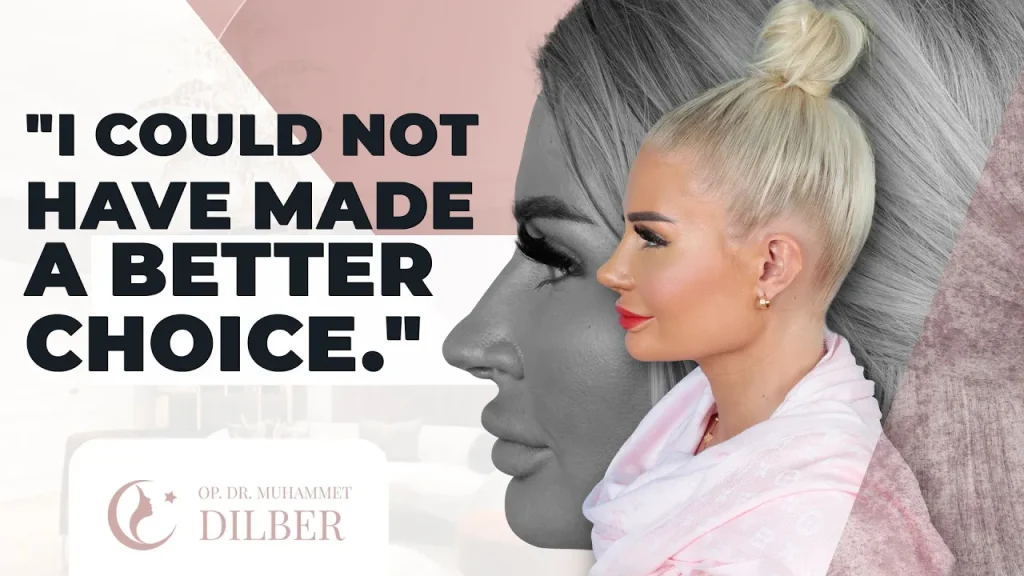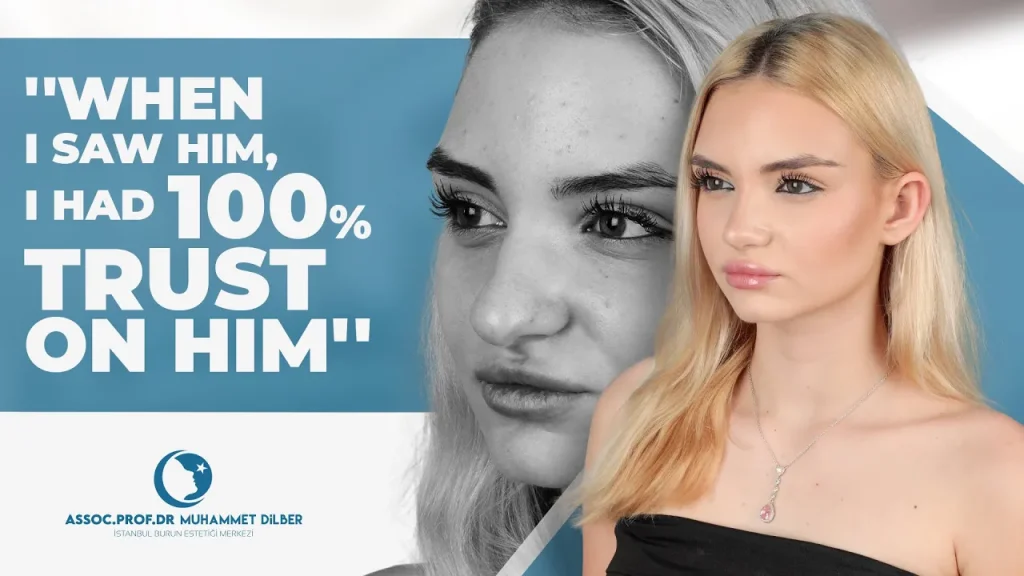Revision (Secondary) Rhinoplasty Turkey | Procedure and Results
Revision rhinoplasty sometimes referred as secondary rhinoplasty, is a surgical procedure performed to correct or improve the results of a primary rhinoplasty surgery. With revision rhinoplasty, it is aimed to reshape the nose and reshaping cartilage and make it better, to reduce or enlarge the size of the nose, to solve breathing problems, to eliminate crooked nose, asymmetries and collapsed areas in the nose and to give the patient a better nose overall. Revision (secondary) rhinoplasty is typically more challenging than primary rhinoplasty because It’s a reconstructive surgery. Choosing the right rhinoplasty surgeon for revision rhinoplasty is the most important step.
Revision rhinoplasty is a highly specialized practice in rhinoplasty surgery. In these operations, the problems that arise as a result of previous nose surgery are corrected and the size, width, profile, tip and nasal asymmetry obtained in previous surgeries are addressed by itself. It also helps to address the respiratory problem as a result of structural failure in the nose. When necessary, grafts obtained from ribs or ear cartilage is usually preferred and the problems are tried to be corrected.
Although revision rhinoplasty is the first disfigurement that comes to mind, the functional effect it provides is just as important. Nose surgery is a surgical procedure in which a small amount of space is removed between the nose and the nose. This and many other aesthetic and functional defects such as secondary rhinoplasty, also called revision surgery can be removed.
Revision Rhinoplasty in Turkey is performed successfully with all applicable surgical techniques. Also Turkish clinics and hospitals are also suitable for this surgery. Even if you are operated on by a different doctor, you can have revision rhinoplasty surgery in Turkey. In that there is a drawback. Revision surgeries performed by experienced Turkish surgeons always yield successful results.
What is Revision (Secondary) Rhinoplasty?
**Revision Rhinoplasty** is a surgical procedure to correct an unwanted condition that persists or occurs after the first rhinoplasty. After the first surgery, it is done to restore the appearance or functionality of the nose. Revision rates generally vary according to the experience of the surgeon. However, surgeons may also need revision in some cases, regardless of experience and expertise. This is due to the complexity of rhinoplasty operations and sometimes unexpected situations can occur after the surgery has started. In some cases, complications may occur during the healing process due to the complex structure of the nose.
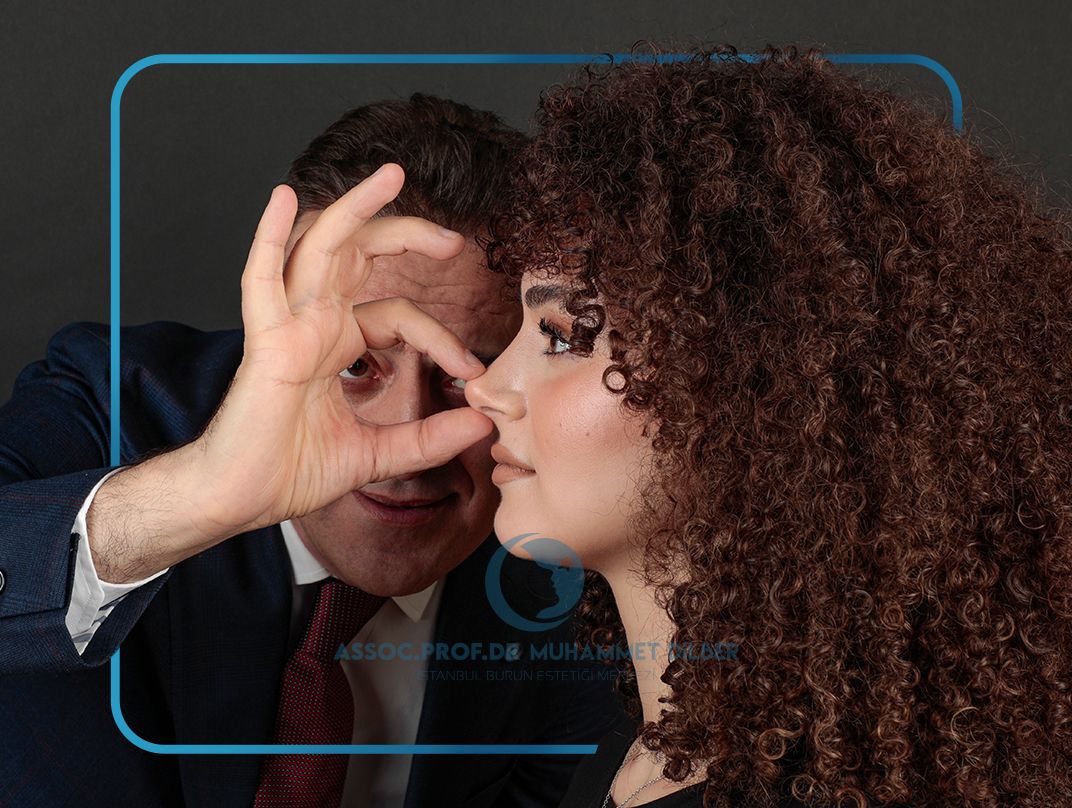

Who is Suitable for Revision Rhinoplasty?
Revision rhinoplasty is a surgical procedure in which the patient is not satisfied with the new nose, and the nose is replaced with a new one due to problems such as unwanted irregularities, collapse, disfigurement, and inability to breathe. The aim of revision rhinoplasty surgery is to transform the anatomical structure and appearance of the nose into natural and suitable for the patients facial structure and reconstruct what is negative in the nose. It can be applied to all patients aged 18 and over. If the patient has very serious health problems, this surgery can be performed until the age of 16.
Rhinoplasty Before and After Videos
How is Revision Rhinoplasty Performed?
After a detailed examination, the doctor will tell you how and why the problem occurred and discuss the solutions with you, focusing on potential ones. By explaining what needs to be done, it produces personal solutions tailored to your needs. First of all, surgery, by its nature, varies according to the person. In aesthetic nose surgery, the nose is shaped by changing its position and repositioning using the cartilage inside the nose. If all of the cartilage in the nose is used in the first operations, cartilage is taken from the ear or rib in revision operations. For bone or cartilage supplementation, cartilage and tissues taken from the patients own body are used due to the possibility of any risk of allergic reaction. Revision rhinoplasty is performed with general anesthesia.
Why is Revision Rhinoplasty Needed?
Revision rhinoplasty is a procedure that is often used by people who have had a nose job before but are not satisfied with the result or who continue to have problems such as difficulty breathing or congestion. Revision rhinoplasty is a much more difficult procedure than the first rhinoplasty. The reason for this is the change of anatomical plans and the presence of missing tissues. The success of surgery, correction of physiological functions, as well as the diagnosis and correction of the problems that have occurred in the nose is one of the points to be considered. These are very important for the comfort of ones life. Revision rhinoplasty surgery usually requires cartilage to correct the problems that are present. If the cartilage removed from the inside of the nose is insufficient, cartilage is removed from the ear scoop. As an alternative to this, cartilage that will be removed from the rib can also be used. The resulting cartilage fixes the existing problem.
Rhinoplasty Before and After Photos
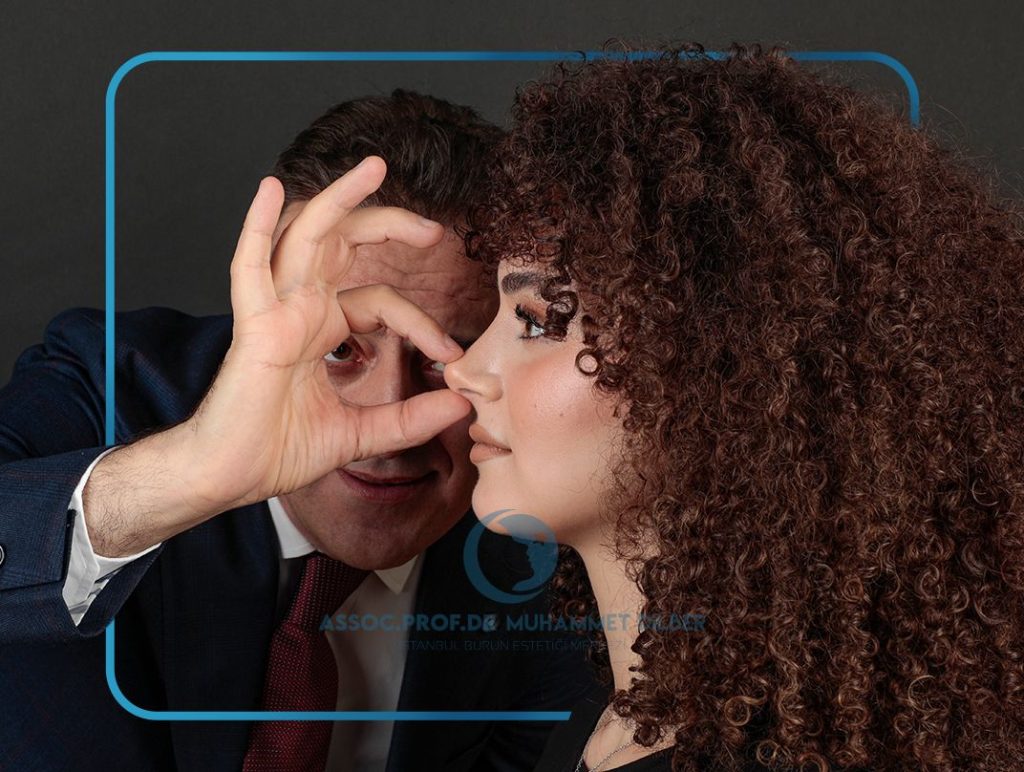
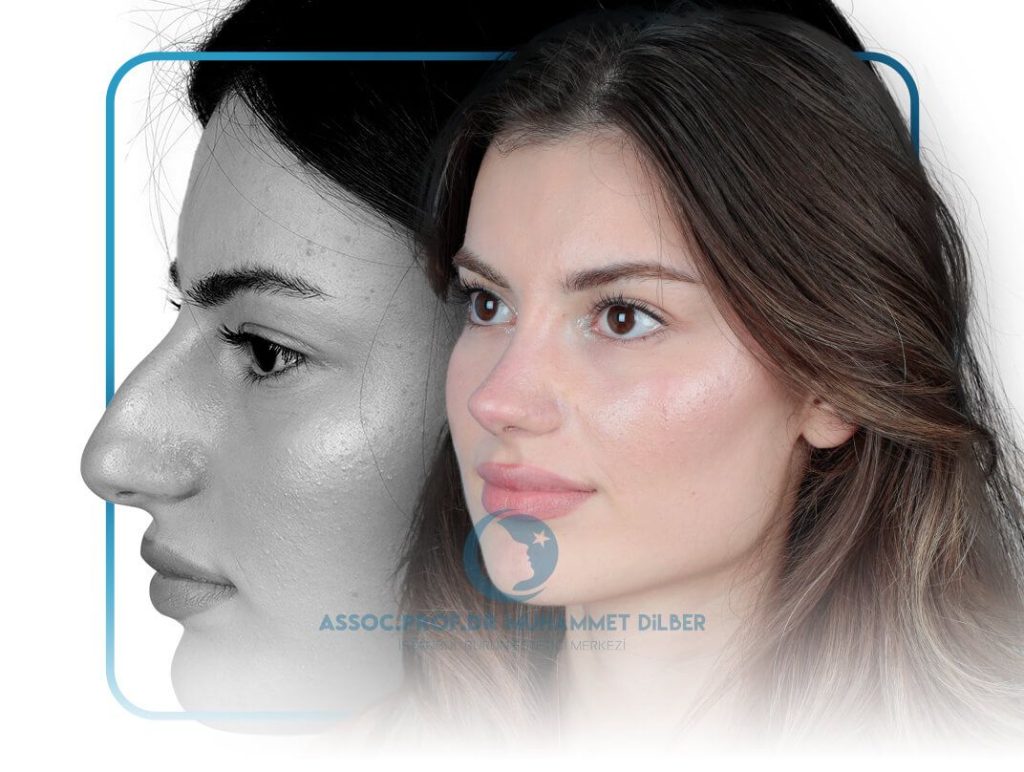
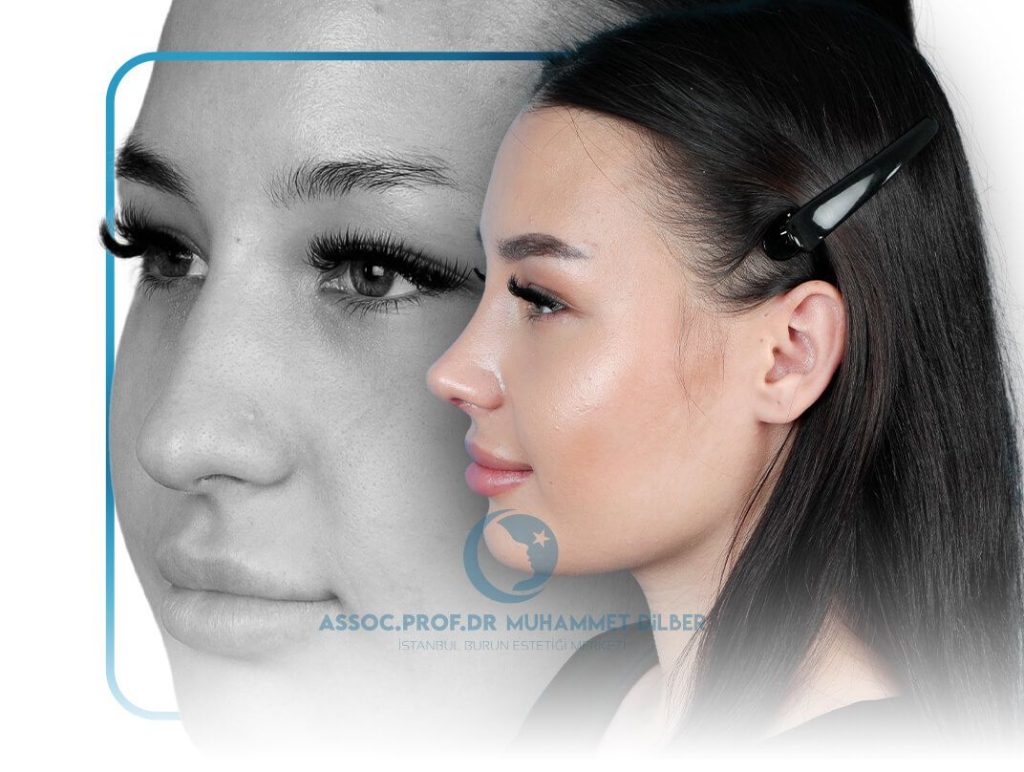
The benefits of Revision Rhinoplasty Assoc. Prof. Dr. Muhammet Dilber
Improved Functionality
Revision rhinoplasty restores structure and strength to the nose to improve nasal airflow. Form and function are directly correlated, so improving nasal function also enhances the appearance of the nose and vice versa so you can breathe easier after the procedure.
Natural-Looking Results
Dr. Dilber has spent decades studying, teaching and writing about unsatisfactory rhinoplasty results. He has the knowledge, experience, and skill to restore natural-looking results in noses that look overdone. Even patients who have had multiple nose surgeries by other doctors achieve more desirable-looking noses after Dr. Dilber performs revision.
Increased Confidence
The nose is a central feature of the face and can have a profound effect on a person’s overall appearance. The majority of patients experience an enhanced self-image and significantly increased confidence after improving this influential facial characteristic.
A Trusted Expert
Dr. Dilber is a revision rhinoplasty expert and has studied this procedure in depth. It is he who other nose specialists often ask for advice. Dr. Dilber uses his expertise to achieve significant improvement for his patients, and he has lectured around the world to educate other surgeons on ideal surgical techniques.
When should Revision Rhinoplasty be done?
Revision Rhinoplasty is performed to correct dissatisfaction after a nose surgery. Therefore, the patient is constantly focused on the problems experienced after the first surgery. In order to correct these problems, operations performed under general anesthesia fall under the scope of secondary nose surgery revision. Nose surgeries have a healing process between up to 12 months. For this reason, the revision surgery must be performed at least 12 months after the first surgery.
Things to consider befor & after
In order to achieve a successful outcome, it is important to actively participate in this process, and this depends in part on how much you follow your surgeon’s instructions before revision rhinoplasty.
Things to consider before revision rhinoplasty
Any qualified surgeon advises you to avoid quitting smoking. In addition, alcohol should not be taken for 48 hours before blood thinners and for 2 weeks after surgery. Your surgeon may direct you to undergo laboratory tests or to receive additional medical evaluations from other specialists. It is very important for patients with diabetes to notify their doctors because rhinoplasty can affect blood circulation.
Things to consider after revision rhinoplasty
After 6-8 weeks of surgery, your nostrils may come in pieces with slimy, bloody, dry shells. Don’t do anything extra to clean them up. Continue to use your spray as long as these arrive. When you wake up in the morning, clean your nose gently without squeezing. 6-12 weeks after revision rhinoplasty may not be as you used to smell. It will return to normal on its own. But if you are very uncomfortable you can do coffee-sniffing exercises 1-2 times a day.
Frequently Asked Questions (FAQ) about Revision Rhinoplasty in Turkey
What is revision rhinoplasty?
Revision rhinoplasty is a secondary (or tertiary) nasal surgery performed to correct or improve the results of a previous rhinoplasty. It may be required due to aesthetic dissatisfaction, functional issues (such as breathing problems), or structural complications following the first surgery.
Who is the best for revision rhinoplasty?
Choosing the “best” surgeon for a revision rhinoplasty is a personal decision that can change according on the patient’s tastes and unique requirements. Nevertheless, there are a number of things to take into account when selecting a surgeon for revision rhinoplasty: expertise and experience look for a surgeon with considerable knowledge in revision surgeries who specializes in rhinoplasty. They ought to have a history of accomplishments and a thorough knowledge of nose anatomy. Board accreditation Make sure the surgeon has board certification from an accredited plastic surgery board or another appropriate professional body. A surgeon’s certification proves that they’ve attained a specified level of education and training. Review the before and after pictures of the surgeon’s prior rhinoplasty patients who underwent revision. You can see their aesthetic preferences and the caliber of their work from this. Read patient testimonials and reviews to gain insight into the experiences that other people have had with the surgeon. A surgeon’s skill and patients’ contentment might be well-represented by positive feedback and satisfied patients. Consultations: Arrange consultations with many surgeons to talk about your worries and goals. This will provide you the chance to gauge their manner of communication, gauge how well they comprehend your particular circumstance, and decide whether you feel at ease and secure in their skills. Keep in mind that picking the best surgeon is a personal choice. Finding a revision rhinoplasty specialist who not only possesses the necessary technical abilities but also comprehends your goals and can offer individualized care throughout the procedure is crucial.
How much does Revision Rhinoplasty cost in Turkey?
Revision rhinoplasty prices in Turkey vary according to the technique, duration, difficulty, experience of the surgeon, hospital prices, country and city of the surgery. It is impossible to determine a net price without examination. There may even be price differences on a city-by-city basis. You can get different prices in cities such as Istanbul, Izmir, Ankara and Antalya. What matters here is the experience of the surgeon. The physical condition of the patient is also a factor in determining the price of the surgery. Despite all, you can have revision rhinoplasty surgery at the most affordable prices in Turkey and have an excellent nose.
Why do patients choose Turkey for revision rhinoplasty?
Turkey, particularly cities like Istanbul and Ankara, is internationally recognized for its highly skilled plastic surgeons, advanced medical technology, and affordable pricing. Many clinics also specialize in complex revision cases and offer personalized treatment plans for international patients.
How soon after the first rhinoplasty can I have a revision?
Most surgeons recommend waiting at least 12 months after the initial rhinoplasty. This allows the nose to fully heal and swelling to subside, ensuring a more accurate assessment and better surgical results.
Is revision rhinoplasty more complicated than the first surgery?
Yes. Revision procedures are often more challenging due to scar tissue, altered anatomy, and reduced availability of cartilage. This makes it crucial to choose a surgeon with extensive experience in revision rhinoplasty.
What problems can revision rhinoplasty fix?
Aesthetic concerns (asymmetry, drooping tip, overdone results)
Functional problems (breathing difficulties, collapsed nasal valves)
Residual bumps or irregularities
Loss of nasal support or contour
Which method is preferred for revision rhinoplasty?
Revision the necessary changes in nose aesthetics can be made by closed or open method. Open nose surgery is usually preferred if there are major structural changes. Minor corrections are usually done with a closed technique. Revision rhinoplasty requires only incisions on the inner wall of the nose to reach the nasal skeleton, there are no scars on the outer nasal skin. Allows the surgeon to directly interfere with the nasal skeleton. However, because the incision is required, the recovery time is longer than the closed technique. The decision to use the closed or open technique in revision nose surgery depends on the condition of the case and the surgeon’s preference, and both techniques contain advantages and disadvantages.
Is a revision rhinoplasty more risky?
In comparison to primary rhinoplasty, revision rhinoplasty, which is a secondary or later nose surgery to repair or change the outcomes of a prior rhinoplasty, can be more involved and involve some risks. The possible hazards and increased complexity of revision rhinoplasty are influenced by a number of factors, including the following: Following surgery initial rhinoplasty, scar tissue may grow and change the morphology of the nose. The surgeon may find it more difficult to maneuver around this scar tissue during a revision procedure, which raises the possibility of problems. Weakening nasal structures: In revision rhinoplasty, weakening nasal features, such as the nasal bones or cartilage, that may have previously been altered during the initial operation, are frequently modified or corrected. This can raise the possibility of tissue damage, inadequate healing, or additional deterioration of the nasal structure. Limited donor tissue: In some circumstances, the amount of appropriate donor tissue for grafting purposes in revision rhinoplasty may be restricted. This may make it difficult to get the results you want and may call for using other grafting methods or materials. Psychological factors: Due to their prior surgery experience, individuals undergoing revision rhinoplasty may have higher expectations and concerns, which might result in heightened psychological stress. It’s essential to control these psychological elements for positive results. Experience and knowledge of the surgeon: Compared to primary rhinoplasty, revision rhinoplasty calls for a higher level of surgical ability and experience. To reduce the dangers of the surgery, it’s crucial to select a surgeon with specific experience in revision treatments. Even though revision rhinoplasty treatments can be more complicated, it is crucial to speak with a licensed and skilled plastic surgeon who specializes in revision surgeries. They may assess your particular situation, go over potential risks, and create a tailored surgical plan to maximize results and reduce complications.
How is cartilage reconstruction handled if needed?
If additional cartilage is needed for support or reshaping, it can be harvested from the patient’s ear, rib, or occasionally septum, depending on availability.
How long is the recovery period after revision rhinoplasty?
Recovery time is similar to primary rhinoplasty but may take longer in complex cases. Swelling can last for several months, and final results may take up to a year to fully emerge.
Are the results of revision rhinoplasty permanent?
Yes, the results are intended to be permanent. However, achieving optimal outcomes depends on the surgeon’s expertise, realistic patient expectations, and proper post-operative care.
Can international patients receive support with travel and accommodation?
Yes. Many clinics in Turkey offer medical tourism packages that include airport transfers, hotel stays, in-clinic translators, and post-operative care, making the process smooth and stress-free for foreign patients.
Contact us
If you have any questions, please contact us. Please fill out the form below.

